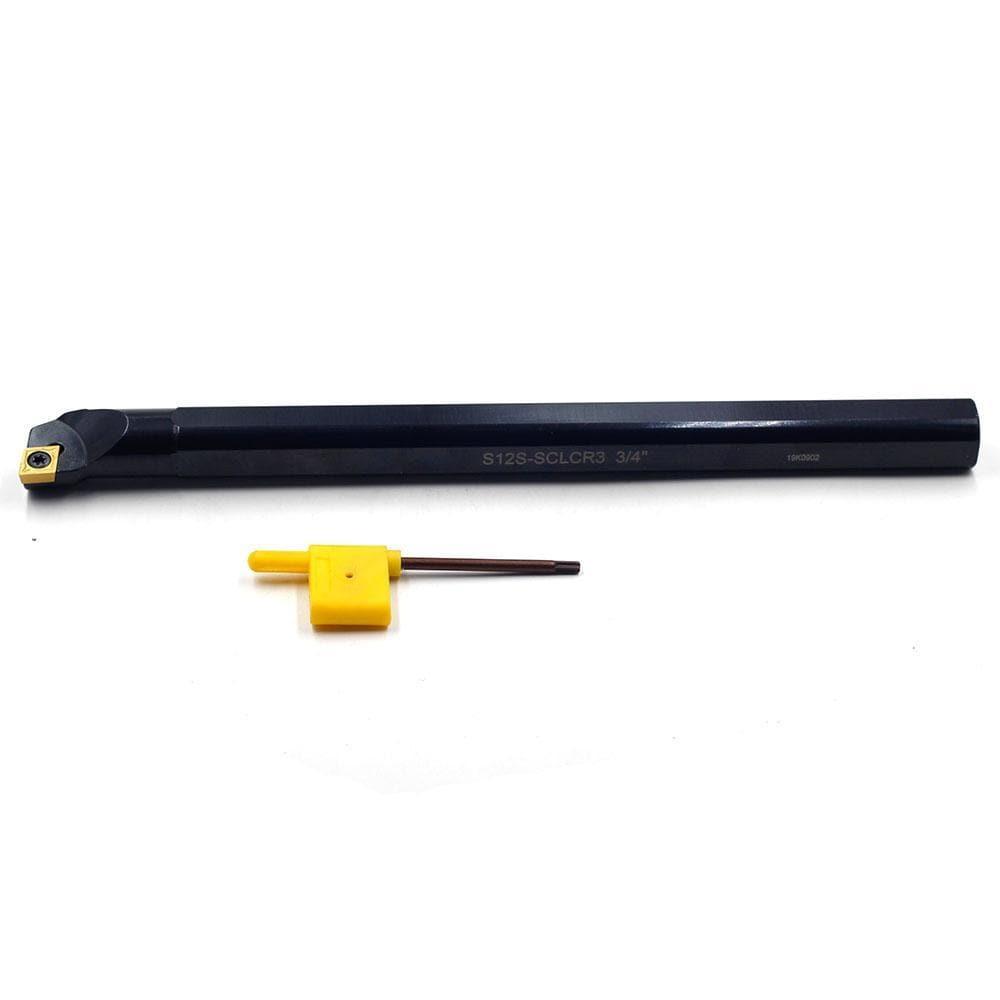Overview Of Indexable Boring Bar Carbide Insert
An indexable boring bar
with a carbide insert is a versatile cutting tool used in machining operations to enlarge or refine the diameter of existing holes. It consists of a long, rigid shank with a replaceable carbide insert at the cutting end.
The shank of the indexable boring bar is typically made of hardened steel or another sturdy material to provide stability and rigidity during the cutting process. It is designed to fit into the tool holder of a lathe or CNC machine, allowing for precise positioning and secure clamping.
The carbide insert is the cutting element of the boring bar and is made from a composite material called tungsten carbide. Tungsten carbide is a combination of tungsten and carbon atoms, which gives it exceptional hardness, wear resistance, and thermal stability. These properties make it an ideal choice for cutting tools in metalworking applications.
The carbide insert is usually held in place on the boring bar using a clamping mechanism, such as a screw or wedge. This allows for easy replacement or indexing of the insert when the cutting edge becomes dull or worn, without the need to remove the entire boring bar from the machine. The ability to index or replace the insert extends the tool's life and reduces downtime for sharpening or grinding.
Carbide inserts for indexable boring bars come in a variety of shapes, sizes, and geometries to suit different machining requirements. The most common insert shapes include round, square, triangle, and diamond. Each shape has its advantages and is chosen based on factors such as the hole diameter, material being machined, and desired surface finish.

The selection of the appropriate carbide insert geometry is crucial for achieving optimal cutting performance. Different insert geometries have specific cutting edge configurations, rake angles, and chipbreaker designs that influence the cutting process. Positive rake angles are suitable for soft materials and light cuts, while negative rake angles are preferred for hard materials and heavy-duty machining.
Carbide inserts with various coatings are also available to enhance their performance. These coatings can provide additional wear resistance, heat resistance, and reduce friction during the cutting process, resulting in improved tool life and surface finish.
The indexable boring bar with a carbide insert offers several advantages in machining operations. Firstly, it provides cost savings as only the insert needs to be replaced or indexed when the cutting edge becomes dull, rather than replacing the entire tool. This reduces tool changeover time and minimizes tooling costs.
Secondly, the carbide insert's hardness and wear resistance allow for extended tool life and consistent cutting performance. This results in improved productivity and reduced downtime for insert replacement or regrinding.
Furthermore, the indexable feature of the boring bar allows for versatility in machining operations. Different types of inserts can be used with the same boring bar, enabling a wide range of hole diameters to be machined with a single tool. This flexibility is particularly beneficial in applications where multiple hole sizes or depths need to be machined.
In summary, an indexable boring bar with a carbide insert
is a valuable cutting tool in machining operations. Its replaceable insert, made from tungsten carbide, provides hardness, wear resistance, and thermal stability. The indexability of the insert allows for easy replacement or indexing, leading to cost savings and increased productivity. By selecting the appropriate insert geometry and coating, manufacturers can optimize their cutting processes, achieve high-quality results, and improve overall efficiency.
|

